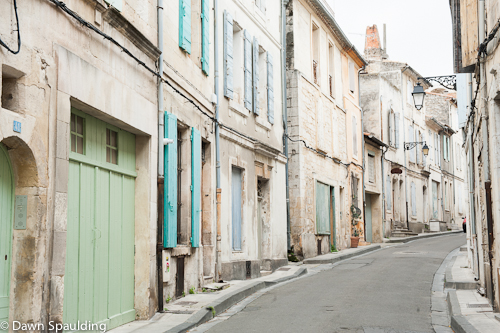
Colorful touches liven up the cityscape
We visited Arles during an overcast, rainy stretch, which was too bad since our favorite activity is just walking the streets. In wet weather, there’s more scurrying from Point A to Point B, and much of the city’s flavor gets lost.
The two things that stuck out to me were Van Gogh and Roman ruins.
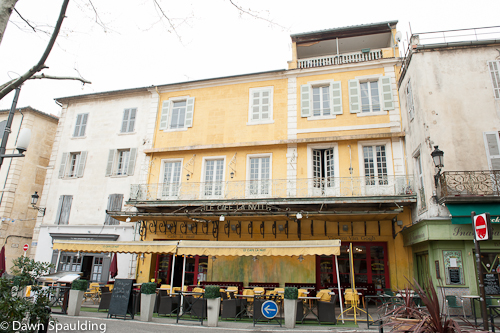
Van Gogh’s most famous subject
Arles is Van Gogh territory. Here, the Dutch artist produced over 300 paintings and drawings, which is amazing since he only lived here for about one year and during that time, lost his mind. Well, let me clarify: he had two stays in the mental hospital before the citizens signed a petition insisting he be confined to a nearby asylum. Around town, he was known as the “fou roux”, or the redheaded madman. Some neighbors.
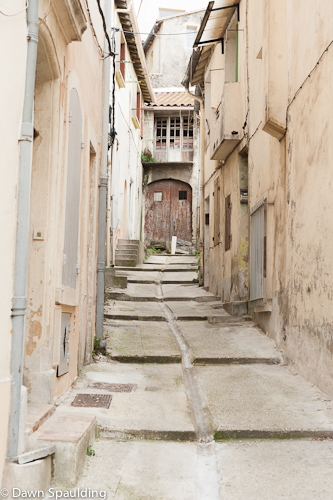
Narrow street amidst ancient buildings
Arles was first inhabited by Greek-Phoenicians. Caesar made it a Roman city in 49 B.C. and the area prospered with the popularity of gladiator fights and chariot races in open-air arenas.
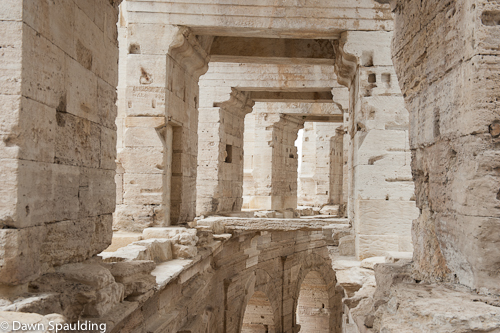
Les Arènes
Arles really arrived when a canal was built linking it to the Mediterranean Sea. Though it became a major port town, it remained in the shadows of its nearest competitor, Marseille. Then the advent of the railroad killed much of Arles’ river trade.
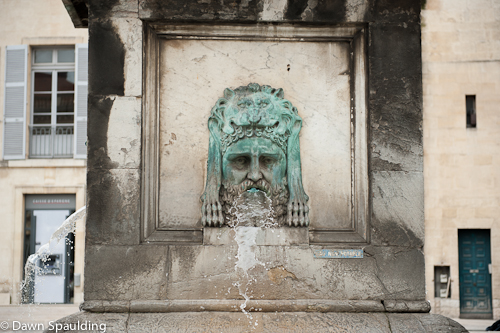
I really like fountains, and this cat hat made me laugh.
After falling to barbarians and slipping into decline during the fall of the Roman Empire, Arles became an independent kingdom until France scooped it up during the French Revolution.
Today, it’s a vibrant city with a few museums, an overload of shops and restaurants and plenty of Roman ruins. We didn’t spend much time there, but maybe we’ll make it back when it’s sunny.
No comments yet.